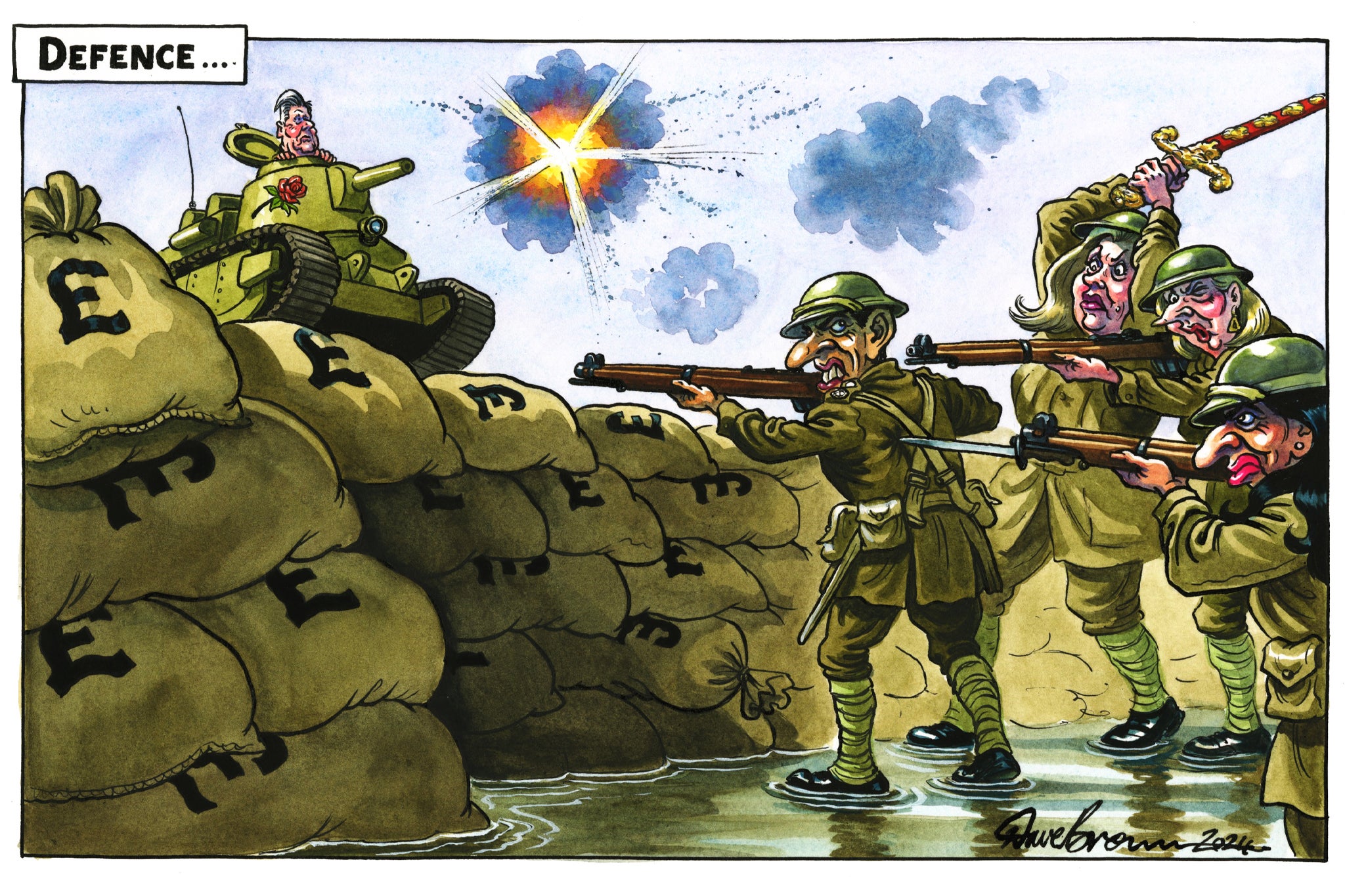Can Britain back up its bold defence pledge to Ukraine?
Editorial: Grand promises are one thing, even when passed by the US Senate and announced with due fanfare by a UK prime minister. Delivery, as President Zelensky well knows, can be quite another

It has been a thin few months for Western assistance to Ukraine, but there are suddenly two pieces of positive news for Kyiv. After a six-month political stand-off, the US Congress has finally approved a $61bn (£49bn) package for Ukraine, as part of a $95bn foreign aid bill, with the first consignments – according to the Pentagon – starting to arrive within days. The US president Joe Biden said it was “ a good day for America ... a good day for Europe”, and “for world peace”. He pledged it would “make the world safer”.
As the US Senate was preparing to vote, the UK prime minister said that this country’s aid to Ukraine was being increased to £3bn this financial year, to include boats, land vehicles and air defence missiles, as well as £500m in financial help. This was formally announced by Rishi Sunak in Warsaw, where he stood alongside the Polish prime minister, Donald Tusk – and the Nato secretary general, Jens Stoltenberg – and also stated that the UK would up its defence spending to 2.5 per cent of GDP by 2030, amounting to an extra £75bn over the next six years.
Together, these new commitments suggest a welcome outbreak of realism on both sides of the Atlantic, a sense of realism given a push perhaps by some desperate-sounding pleas from Volodymyr Zelensky and US intelligence briefings to the effect that without more military help, Ukraine’s chances against Russia were diminishing by the day.
The new US assistance is expected to include longer-range missiles that would allow Ukraine to strike at targets deep into Russian territory – something the US has expressed misgivings about in the past – as well as additional air defence capability. Ukraine’s need for air protection has been especially conspicuous in its second city, Kharkiv, which has come under sustained Russian attack in recent weeks.
The package announced by the UK is of a more modest order, but quantity is not all that matters. Signals of support and intention matter, too, not least for morale, with this week’s US and UK undertakings reported to have been well received by troops on Ukraine’s front lines.
They also drew criticism from Russia and its media, suggesting concern in the Kremlin about the renewed Western pledges of support for Ukraine and the difference it could make at a time when Russia is said to be preparing a fresh offensive.
Welcome though the latest developments are, their substance needs to be scrutinised; as does what is actually supplied to Ukraine – and when. For instance, not all the $61bn will go to Ukraine either now or at all. A proportion will go to US arms manufacturers, with production reaching Ukraine only in several months’ time. Nor is it certain how soon the UK’s promised contributions will arrive.
UK military officials have expressed concern in the recent past about the depletion of stocks because of supplies sent to Ukraine. Something similar applies to the UK government’s undertaking to increase defence spending to 2.5 per cent of GDP by 2030.
There are ways in which this could be a positive contribution to national defence, potentially allowing the UK – according to a London military think tank – to close an equipment funding gap and accelerate the learning of lessons from the Ukraine war. The announcement is also likely to have been timed with a view to Nato’s 75th-anniversary summit in Washington in June, where the alliance will be concerned with demonstrating its viability for fear that Donald Trump could win the US election in November and cast even more doubt on the US commitment to the defence of Europe than he did before.
But again, a careful eye needs to be kept on the stated increase in defence spending and the timetable. Past increases have included some creative accounting, rather along the lines of the overseas aid budget which is now helping to foot the bill for asylum seekers in the UK.
Although Mr Sunak described the rise as “fully funded”, and some reports suggest that it could be paid for by cuts in the civil service, there is increasing pressure on the public purse from the NHS and the benefits bill.
Nor is it clear what has changed since the Budget, when the chancellor chose to reduce national insurance rather than increase defence spending – a choice that may have contributed to the resignations of both the defence secretary, Ben Wallace, and armed forces minister, James Heappey (although they deny this).
The biggest question mark over the commitment to higher defence spending, however, relates to the life of this government, which has – at most – nine more months in power.
As yet, there has been no formal assurance from Labour to keep it; their formula has been that spending can rise to 2.5 per cent of GDP when this can be afforded – which is rather a different proposition. So, the good news for Ukraine and Western security needs to be tempered.
What Ukraine actually receives, whether from the US or the UK – and by how much the UK increases its defence spending, if at all – needs to be monitored carefully in the coming months. Grand promises are one thing, even when passed by the US Senate and announced with due fanfare by a UK prime minister.
Delivery, as President Zelensky well knows, can be quite another.
Join our commenting forum
Join thought-provoking conversations, follow other Independent readers and see their replies
Comments
Bookmark popover
Removed from bookmarks